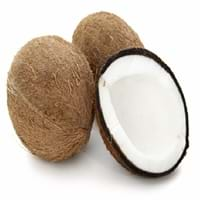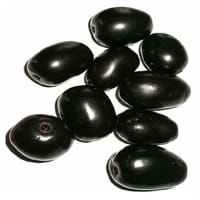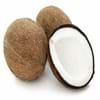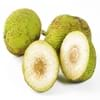Health Benefits
Acidity treatment, Acts as natural antibiotic, Anti-oxidant properties, Aphonia treatment
Cancer prevention, Heart care, Increase in haemoglobin, Regulates Blood Sugar, Ulcer prevention
General Benefits
Anti-inflammatory properties, Body hydration, Boosts immune system, Controls blood sugar levels, Digestive aid, Fights against infections, Flu treatment, Healing of wounds, Helps in weight loss, Maintains healthy cholesterol level
Boosts immune system, Digestive aid, Fights against infections, Strengthens bones
Skin Benefits
Anti-aging benefits, Heals sunburn, Hydrates skin, Reduces wrinkles, Skin rejuvenation, Skin revitalization, Treatment of skin diseases
Brightens and lightens complexion, Skin cleansing, Skin rejuvenation, Treatment of acne, Treatment of dark spots
Hair Benefits
Promotes longer and healthier hair, Regulates hair growth, Rejuvenates scalp, Shiny hair, Treatment of dandruff
Promotes longer and healthier hair, Protects hair
Allergy Symptoms
Abdominal pains, Breathing difficulty, Itching in tongue and other parts of mouth, Nasal congestion, Nausea, Runny nose, Vomiting
Abdominal pains, NA
Side Effects
Allergic reaction, Indigestion, Weight gain
Decrease in blood sugar levels, Allergic reaction, Throat irritation, Throat swelling, Possibly unsafe during pregnancy
Best Time to Eat
Along with meal, Best if taken as a breakfast (or empty stomach), As a snack in the late afternoon, Morning time (before lunch)
As a snack in the late afternoon, Don't consume at night and before bed, Eat the fresh ones, avoid mixing with any other foods, don't eat after meal., Morning time (before lunch), Strictly avoid empty stomach
Vitamin B5 (Pantothenic Acid)
Not Available
Vitamin B9 (Folic acid)
Not Available
Vitamin C (Ascorbic Acid)
Vitamin E (Tocopherole)
Not Available
Vitamin K (Phyllochinone)
Not Available
Lutein+Zeaxanthin
Not Available
Calories in Fresh Fruit with Peel
Not Available
Calories in Fresh Fruit without Peel
Not Available
Calories in Frozen Form
Not Available
Not Available
Calories in Dried Form
Not Available
Calories in Canned Form
Not Available
Type
Tree fruit, Tropical
Tree fruit, Tropical
Season
All seasons
Monsoon, Summer
Varieties
Tall Varieties- West Coast Tall, Laccadiv Micro, Andaman Ordinary, Fiji, Kappadam, San Ramon, Philippines, Spicate, and Pratap. Dwarf Varieties- Chowghat Orange Dwarf (COD) and Chowghat Green Dwarf (CGD)
Ram Jarnun and Paras
Color
Brown, Green
Black, Magenta, Purple
Inside Color
White
Purple
Taste
Juicy, Sweetish
Astringent, Sweet
Origin
America, India
Bangladesh, India, Indonesia, Malaysia, Nepal, Pakistan, Philippines, Sri Lanka
Soil Type
Clay, Sand
Loam, Sandy loam, Well-drained
Climatic Conditions
Hot, Humid
Humid, Rainfall
Facts about
- Burning coconut's husk helps repel mosquitoes.
- Surveys say that falling coconut kills hundreds every year.
- Coconut water is used as a substitute Blood Plasma & is called "father of modern tissue culture science".
- Wood of jambul tree is water-resistant wood & is used in railroads and to implement engines in the well.
- In Indian mythology, it is said that Jambul fruit was revered by Buddha.
- Jambul has a huge importance in Ayurveda.
Top Producer
Indonesia
India
Other Countries
Brazil, India, Philippines, Sri Lanka
Bangladesh, Indonesia, Malaysia, Nepal, Pakistan, Philippines, Sri Lanka
Top Importer
United States of America
Not Available
Top Exporter
Philippines
India
Botanical Name
Cocos nucifera
Syzygium cumini
Synonym
Not Available
Eugenia cumini
Subkingdom
Tracheobionta
Tracheobionta
Division
Magnoliophyta
Magnoliophyta
Class
Liliopsida
Magnoliopsida
Subclass
Arecidae
Rosidae
Family
Arecaceae
Myrtaceae
Species
C. nucifera
S. cumini
Generic Group
Arecaceae
Not Available
Difference Between Coconut and Jambul
We might think that Coconut and Jambul are similar with respect to nutritional value and health benefits. But the nutrient content of both fruits is different. Coconut and Jambul Facts such as their taste, shape, color, and size are also distinct. The difference between Coconut and Jambul is explained here.
The amount of calories in 100 gm of fresh Coconut and Jambul with peel is Not Available and 60.00 kcal and the amount of calories without peel is 354.00 kcal and Not Available respectively. Thus, Coconut and Jambul belong to and category.These fruits might or might not differ with respect to their scientific classification. The order of Coconut and Jambul is Arecales and Myrtales respectively. Coconut belongs to Arecaceae family and Jambul belongs to Myrtaceae family. Coconut belongs to Cocos genus of C. nucifera species and Jambul belongs to Syzygium genus of S. cumini species. Beings plants, both fruits belong to Plantae Kingdom.









